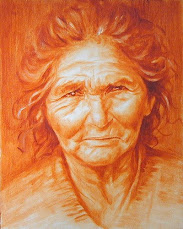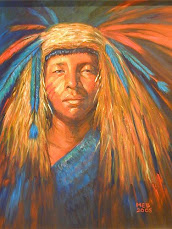Shopping in Lima
Most foreigners hate Lima. It is huge, crowded, and dangerous. The traffic is horrendous. The hills surrounding the city look like accumulations of vacuum cleaner dust. The sea is polluted. The winter consists of the "garua", a low-lying layer of clouds that spits and drools, trapping the smell of fish meal being produced in the seaside factories. What is there to like, they wonder, and scamper off for the greener pastures of Cusco and Machu Picchu, places filled with things tourists like.
What they miss are the hidden treasures. For me, Lima has more hidden treasures than any city I've lived in. I was lucky when I lived there to have a dear friend who, if anything, was even more ready and willing than I to hop in the car and drive to areas that even most inhabitants of Lima avoided. The two of us, equipped with determination and a sense of adventure, and shorn of purses, jewelry, and any other temptations, would dive into the city as if it were a sea and we were scuba divers in search of treasure. We invariably found it.
One of our favorite places to go was the wholesale flower market on the decidedly "wrong" side of town, near the colonial-era bullring and surrounded by impoverished shanty towns. We would drive there, leave our car in the care of some trustworthy -- we hoped -- individual eager to make some spare change, and enter another world, illuminated by rays of sunlight entering through holes in the roof high overhead. Row after row of cut flowers, of every variety and color one could want, heaps, and stacks, and mountains of flowers, watched over by women in traditional Peruvian dress. Men would wander through bearing baskets full of figs so ripe they oozed their honey, or home-made tools used to strip rose stems of their thorns. We would buy enough flowers to fill the car -- roses, sunflowers, freesias, peonies -- and laugh in wonder at how little we spent. My favorite memory of that market was a day when a minstrel group appeared with their ancient instruments, singing songs of beautiful flowers, and lovely women...
The food markets were marvelous as well. My favorite one had beautifully stacked displays of vegetables of an amazing variety. Four different colors and shapes of eggplants; more varieties of raddichio than I saw in four years in Sicily; purple beans; sacks filled with fresh artichoke hearts in acidulated water, strange Japanese and Chinese tubers and vegetables. One could also find small bodegas, or neighborhood grocers, that were filled with wonders from around the world. One day, browsing, I came across some strange-looking objects, looking like large brown fava bean pods covered in wax. Abudurajo, they were called. Could they be? I wondered. And they were! Bottarga, or pressed dried fish roe, which I'd grown to love in Sicily, grated over pasta or thinly sliced on toasted bread, a product one could find in the U.S. only at specialty markets at an exorbitant cost. Lima's position on the coast, near the Humboldt current and its famed schools of fish, her immigrants who came from every corner of the world, the geography that enfolds and supports infinite microclimates....all these elements lead to one of the richest cuisines in the world.
Handicrafts were another wonderful source of endless delight and discovery. There were the markets, of course, known as the "Indian" or "Incan" markets, filled with ceramics and textiles and mirrors and paintings and all manner of lovely things at good prices. Even better than the markets, though, and hidden off the tourist beat, were the little "talleres" that surrounded the city, mostly in the shanty towns clinging precariously to the dusty mountainsides. During the terrible years when terrorism had its claws in Peru, many people fled the killings in their home villages. Many of these villages were in the Ayacucho region, which happened to be one of the richest regions in terms of ceramic crafts. After arriving in Lima, the craftsmen set up shop and continued to practice the crafts and traditions passed down through the generations. Those with determination could uncover these treasures.
One day, stuck in a horrendous traffic jam in an old part of Lima, I happened to look over at a small building nearby. The front door was open in the heat of summer and inside, illuminated by a skylight, I saw an old man applying gold leaf to an elaborately carved frame. With a sense of adventure and with eyes wide open, one finds hidden treasures in the most unlikely places!
Stay tuned for more: bead shopping and the famed fabric district!













1 comment:
Thank you for a charming adventure in Lima tonight. Your wonderful descriptions put me right there. Please write about the llama-alpaca fair. (Alpacas don't spit at people, at least ours don't)
Post a Comment